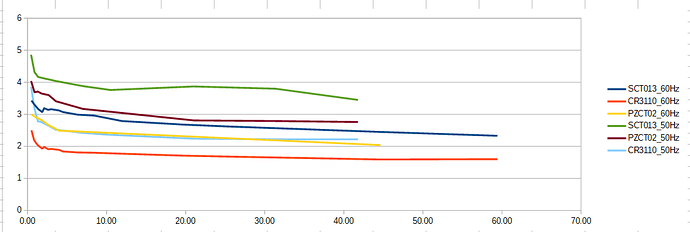To date, all of the phase measurement and correction data has been developed here in the USA - at 60Hz. Given that I had no access to a 50Hz power system, I just had to put on the blinders and go with the 60Hz results. Accuracy reports from the other side of the pond have been pretty good, so it didn’t seem to be a pressing topic.
I recently acquired a 230V 60Hz “true-sine” power inverter. It works great, and now I’ve had a chance to take a preliminary look at that part of the puzzle. There’s good news and bad, but mostly good.
I first tested the UK Ideal voltage transformer. Voltage was pretty constant at between 229 and 230. The adapter, as connected to the IoTaWatt, leads the line voltage by 2.72º. By comparison, the same VT at 240V 60Hz leads by 1.78º. So the net increase of VT lead is about 1º.
Next, I tested three CTs likely to be used in the 230V countries. Here they are:
They all show greater phase lead at 50Hz. The venerable SCT013 increases by about 1º. The other two, slightly better quality CTs have less shift to begin with, and increase by 0.6º to 0.9º.
This data explains why the IoTaWatt is working so well in the 50Hz world with 60Hz calibration. A good number of the sites are using SCT013 CTs, and the net phase difference with the VT is the same at both 50Hz and 60Hz. IoTaWatt corrects the net difference.
As you can see in the graph, shift does vary with primary current. I’m looking into using multiple corrections as a function of both current and frequency, but to square these numbers I looked at the SCT013 at 3.5 Amps primary:
CT vs ACline - 4.01º
VT vs ACline - 2.72º
VT vs CT ------ 1.34º (net of the above is 1.29º
So the phase measurement seems to prove out to .05º in this case.
The bottom line is that while it will be good to get 50Hz shift corrections into the tables, the accuracy is only marginally affected with the 60Hz numbers in use.
Of course this is all mute for North American Users.
